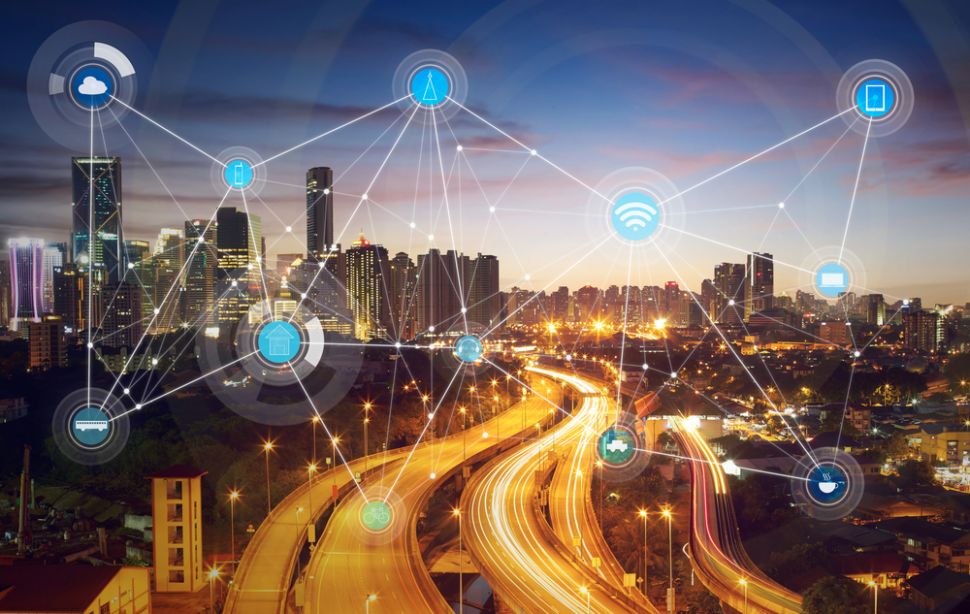The future of tech for delivery in a post-COVID-19 world
On-demand delivery

In one way or another, everyone around the world has had to change their daily habits and ways of life over the past few months in order to abide by lockdown rules, including working from home. For those forced to stay at home, due to vulnerable health conditions or caring for loved-ones, on-demand delivery companies have become a vital service to provide us with essential items such as food and pharmaceuticals.
Bartek Kunowski, VP of Product, Glovo.
But consumers are not the only ones to benefit from the delivery industry during COVID-19. With many local stores and restaurants forced to close, the ability to offer quick and efficient delivery to customers has become vital for businesses big and small to continue operating during the pandemic.
On-demand delivery operations
The backbone of all on-demand delivery operations is technology. COVID-19 was the ultimate test to see how systems and partners would handle a rapid increase in customer demand.
The likes of artificial intelligence, machine learning, data analytics and predictive tools all play a key role in keeping companies and day-to-day life connected. And thanks to these innovations, we can be more efficient than ever before; saving time, reducing waste and better-utilizing couriers.
This is a trend that’s set to continue as we begin to emerge from this pandemic. We’ve only scratched the service of the opportunities technology can bring to on-demand delivery. Here are three ways in which we've seen technology in delivery evolve since COVID-19.
Making ‘contactless’ available for everyone
The concept of ‘contactless’ is not a new innovation, but since COVID-19 it’s become an essential way for businesses to accept payments safely from mobile payment apps. Some smaller vendors have been slower to adopt contactless payments and this is mostly due to the cost for the vendor of credit card processing fees, especially when the purchases are small.
Before COVID-19, the UK, Europe and Asia had taken contactless payments in their stride, but in the US 'tap and pay' culture has been difficult and slow to implement. Many customers and SMEs are still attached to cash and swiping a credit or debit card through.
Are you a pro? Subscribe to our newsletter
Sign up to the TechRadar Pro newsletter to get all the top news, opinion, features and guidance your business needs to succeed!
Despite the UK and Europe being some of the biggest adopters of contactless payments, older generations have been known to use this innovation as much as the younger population. COVID-19 has been a catalyst for this older demographic to adopt contactless payment, as many vendors do not accept cash due to health and safety. Not only making it safer for them to buy goods but also the couriers and employees serving them.
Payments in this sector have not finished growing. PayPal recently announced that it will be rolling out a new addition to their mobile app which will allow customers to use QR codes to make payments nearly everywhere customers can purchase items. This will allow those who do not want to use cash, to easily pay others. This innovation will greatly benefit on-demand delivery couriers as they can now accept payment in person without touching any cash and risking their health.
Introducing drone and robot delivery
Drone and robotics delivery have been a hot topic for several years, yet they are still to be fully accepted as a routine way to deliver and receive orders. The need for completely contactless delivery in recent times has pushed this technology into overdrive.
Drone delivery during the pandemic has been a lifeline for more remote and difficult to reach areas. For example, in the UK, drones have been used as a safer way to deliver medical supplies to hospitals in the Isle of Wight as it limits human contact. Looking beyond COVID-19, drone deliveries can also help reduce emissions. Congestion in our cities is a serious issue and governments worldwide are increasingly pledging to reduce this.
Recent events have shown the positive effects that lowering carbon emissions can have on our planet as pollution levels have dropped dramatically. Electronic drones offer businesses a way to keep carbon emissions low without compromising on speed. Despite drones making more regular trips, it has been found that they produce fewer emissions than a delivery truck.
Robotics have also had their moment in the spotlight during the pandemic as supermarkets and pharmacies scramble to keep-up with high online demand. It is evident that delivery companies need to become more efficient, and robots can offer those extra pairs of hands. Ocado, for example, has announced its plans to raise £1 billion to cope with the huge increase of orders and help their partners.
A large portion of this investment will go towards automated warehouses with robotic hands, to help speed-up processing and delivery. With social distancing set to be implemented for the long term, these types of robotic assistants will also help with health and safety, and reduce the spread of the virus between humans.
Increasing efficiency with dark deliveries
The use of dark kitchens and supermarkets have become hugely successful across Europe in the last few years, and COVID-19 has merely amplified this. With restaurants and shops being shut down, business owners will be feeling the pinch of paying rent but not being able to use the space. More and more delivery companies are now offering dark kitchens and stores to partners with no rental charges, eradicating the need to rent a physical space and empowering those still looking to trade during the lockdown.
Dark delivery not only saves partners money but also a lot of time. In combination with AI and predictive analytics, dark stores and kitchens can adapt their menu and product lines to suit the customer’s need in a specific area. For example in London, on Friday evenings, it wouldn’t be uncommon to see a spike in demand for pizza delivery, therefore restaurants must have the food and ingredients ready to go. The algorithms will learn the rhythm and patterns of the city to ensure that merchants have the correct stock to meet the demand.
Coronavirus has been an eye-opening time for many industries and delivery has been key to many of us during lockdown. And it’s fair to say that the industry would be in a very different place now, had it not been for technology and innovation. Invention comes from necessity and COVID-19 has been the ultimate test for delivery. It has allowed companies to innovate quicker and has set them up to make even more developments to cope with demand.
- We've featured the best enterprise resource planning (ERP) software.
Bartek Kunowski is the VP of Product at Glovo.
